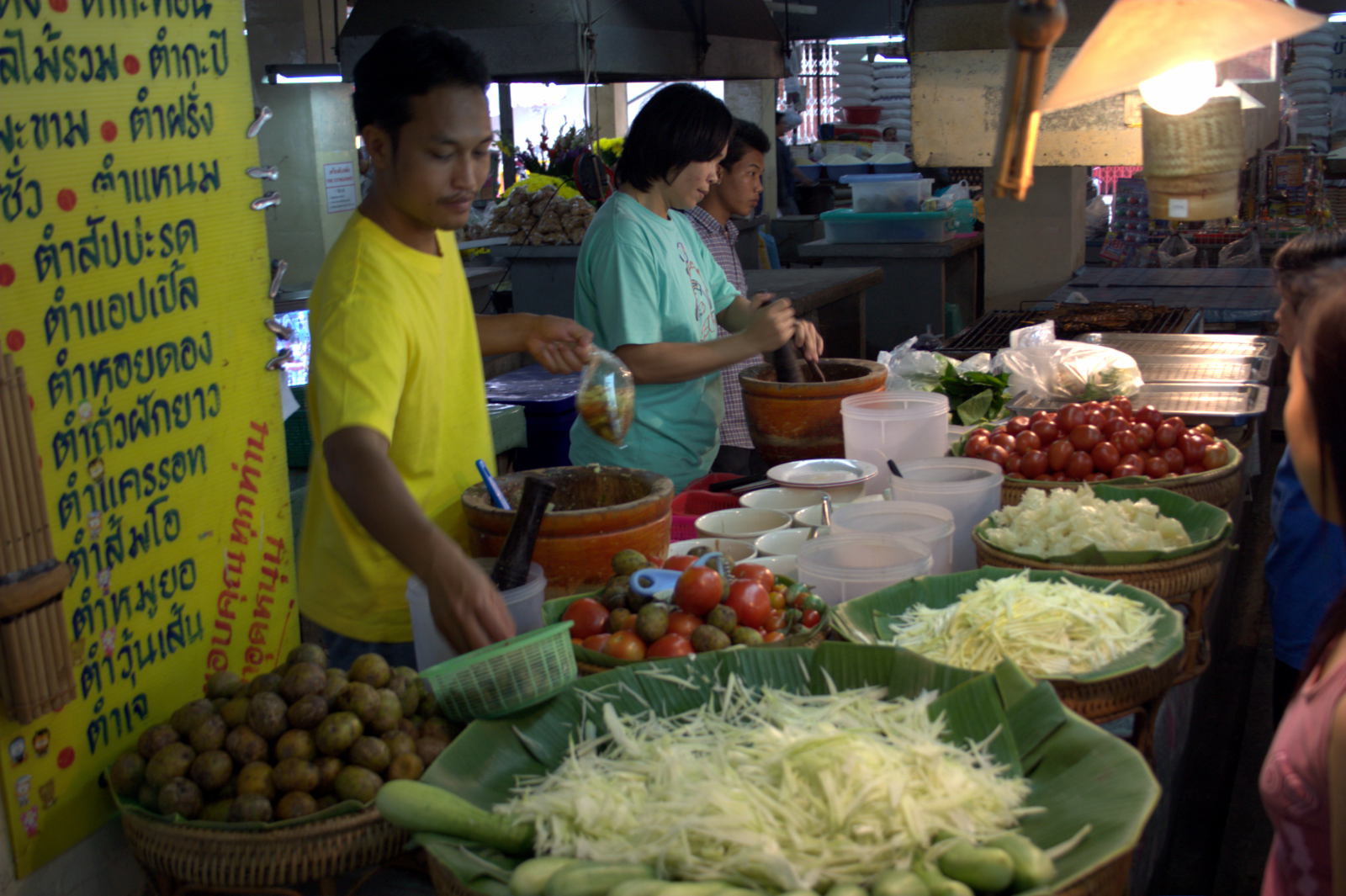If there’s such a thing as a single national dish for Thailand, it wouldn’t be the Tom Yum soup widely known among western visitors and Thai food aficionados. It would almost certainly be the sweet, hot and sour salad made with green papaya. Such is the popularity of this dish that entire television shows, songs and books have been devoted to it.

However, som tam is not a ‘sophisticated’ dish that experts dryly discuss like French wines. Som tam is the food of the countryside, part of the national identity that harks back to the people’s agricultural roots of not long ago. Celebrations of this recipe are exactly that – a joyous, often raucous outpouring of enthusiasm for simpler times.
Although som tam is most identified with Isan (north-eastern Thailand), it is found all over Thailand and the north has its own variations. The area around Chiang Mai is especially famous for som tam poo, which adds small, black fresh water crabs found in rice fields to the basic recipe.
Thoughts of som tam always take me back to one of my first encounters with the dish. It was around 1990, on only my third visit to the north, and a few years before I came to live in Thailand permanently. I had made friends with a couple of locals on the previous trip, and on this occasion they took me around to show me their countryside. We had just visited the much older city of Lamphun, about 30 kilometres from Chiang Mai, and were on our way back. We passed an odd cone shaped hill that sprouted incongruously from the flat plain, which had a temple at the base with a new pagoda (chedi) at the peak. We decided to stop and take a look.
The monastery was relatively new, with the monk’s small quarters spread out in an old orchard at the base of the hill. As we walked through the collection of tiny cottages, unsure about whether or not we would climb the 409 stairs to the top of the hill, my friends pointed to a larger building just off the path. Inside the building was a large alter with many Buddha images, and in front of the alter sat an old monk. We knelt on the floor and my friends paid their respects to the monk. As we sat back, looking around the place, I began to notice that the monk had not acknowledged our presence. In fact, he didn’t appear to be moving at all. After a while, one of my friends leaned over to me, nodded towards the monk and whispered, “He was a great man when he was alive, but now he’s not so good.”
This taught me that no matter how good you may be, people will always expect more of you. We ended up climbing up to the unfinished monument, and on returning to the front of the temple, we were definitely in the mood for a snack. There was a som tam stall in front of the temple, so we had freshly made som tam with some sticky rice and fried chicken.
The main ingredient in som tam is green papaya. Green papaya is generally only found in Thailand and some other south Asian countries. This makes ‘real’ som tam hard to replicate outside of Thailand. But leave it to the Thais’ culinary ingenuity to come with alternatives. In researching this site, I found nearly 60 different recipes for this one dish, using everything from green apples to zucchini.
To make som tam ‘properly’ requires a large mortar and pestle. The device used is generally different from the small sets that are usually used to grind spices for a curry paste and typically made out of stone. Mortars for som tam are usually large cone-shaped ceramic pots that may hold two litres or more of liquid. The pestle is usually made of wood and resembles a small baseball bat or club.
The mortar and pestle is essentially used to prepare the ‘dressing’ for this salad, by grinding together garlic and chillies with some other seasonings such as lime juice, fish sauce and sugar. The vegetables are then added to the dressing and mixed thoroughly. While the papaya may be shredded and other ingredients prepared and ready to go, som tam is always assembled fresh and served immediately. If allowed to sit too long, the vegetables will get soggy and the dressing can turn bitter.